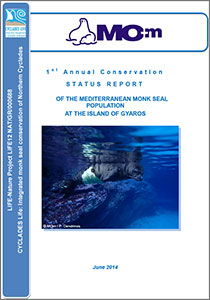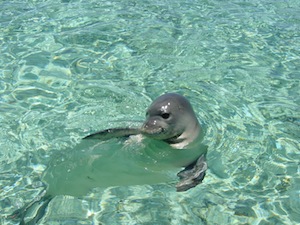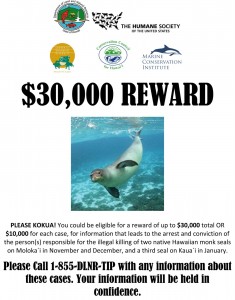Recent Publications
![]()
Özgür Emek Inanmaza, Özgür Değirmenci and Ali Cemal Gücü. 2014. A new sighting of the Mediterranean Monk Seal, Monachus monachus (Hermann, 1779), in the Marmara Sea (Turkey). Zoology in the Middle East, 60 (3): 278-280. DOI:10.1080/09397140.2014.944438
[…] In total six caves displaying Monk Seal resting/breeding characteristics (see Karamanlidis, Pires, Silva, & Neves, 2004; Gucu, Gucu, & Orek, 2004) were discovered. There was clear evidence in one of those cases, namely the peculiar odour and tracks on the inner sandy beach, and this indicated the recent presence of a seal in the cave. The cave had a surface opening with an inner area and a platform formed by sand, pebbles and large boulders. During the surveys, seals were sighted at four different occasions on 21 April, 27-30 May and 14 June 2014, and were recorded on a video. […]


 The Final PEIS for Hawaiian Monk Seal Recovery Actions was made available for public review from April 11 to May 12, 2014. The Preferred Alternative identified in the Final PEIS is Alternative 3, Limited Translocation. The Preferred Alternative does not include any translocation option that involves moving seals born in the Northwestern Hawaiian Islands and releasing them in the main Hawaiian Islands. The Final PEIS is available at:
The Final PEIS for Hawaiian Monk Seal Recovery Actions was made available for public review from April 11 to May 12, 2014. The Preferred Alternative identified in the Final PEIS is Alternative 3, Limited Translocation. The Preferred Alternative does not include any translocation option that involves moving seals born in the Northwestern Hawaiian Islands and releasing them in the main Hawaiian Islands. The Final PEIS is available at: Rewards of up to $30,000, the largest of its kind in Hawaii, are being offered for confidential tips that lead to the arrest and conviction of whoever killed three critically endangered Hawaiian monk seals on Molokai and Kauai since November.
Rewards of up to $30,000, the largest of its kind in Hawaii, are being offered for confidential tips that lead to the arrest and conviction of whoever killed three critically endangered Hawaiian monk seals on Molokai and Kauai since November.